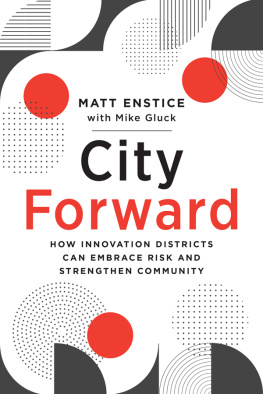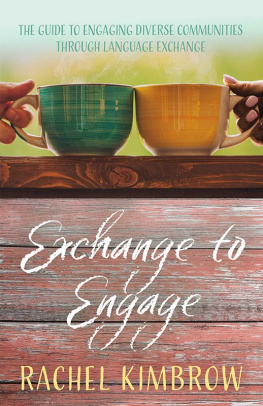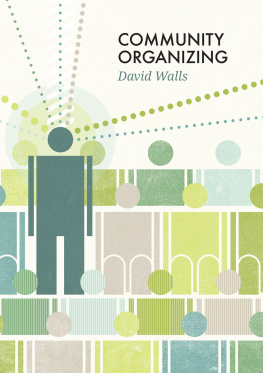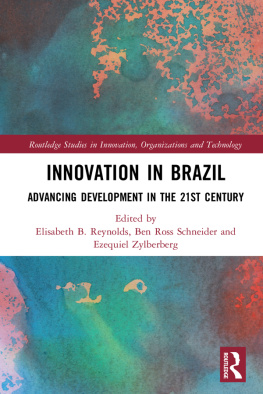Matt Enstice - City Forward: How Innovation Districts Can Embrace Risk and Strengthen Community
Here you can read online Matt Enstice - City Forward: How Innovation Districts Can Embrace Risk and Strengthen Community full text of the book (entire story) in english for free. Download pdf and epub, get meaning, cover and reviews about this ebook. year: 2022, publisher: Island Press, genre: Politics. Description of the work, (preface) as well as reviews are available. Best literature library LitArk.com created for fans of good reading and offers a wide selection of genres:
Romance novel
Science fiction
Adventure
Detective
Science
History
Home and family
Prose
Art
Politics
Computer
Non-fiction
Religion
Business
Children
Humor
Choose a favorite category and find really read worthwhile books. Enjoy immersion in the world of imagination, feel the emotions of the characters or learn something new for yourself, make an fascinating discovery.
- Book:City Forward: How Innovation Districts Can Embrace Risk and Strengthen Community
- Author:
- Publisher:Island Press
- Genre:
- Year:2022
- Rating:4 / 5
- Favourites:Add to favourites
- Your mark:
City Forward: How Innovation Districts Can Embrace Risk and Strengthen Community: summary, description and annotation
We offer to read an annotation, description, summary or preface (depends on what the author of the book "City Forward: How Innovation Districts Can Embrace Risk and Strengthen Community" wrote himself). If you haven't found the necessary information about the book — write in the comments, we will try to find it.
Innovation districts and anchor institutionslike hospitals, universities, and technology hubsare celebrated for their ability to drive economic growth and employment opportunities. But the benefits often fail to reach the very neighborhoods they are built in. As CEO of the Buffalo Niagara Medical Campus, Matt Enstice took a different approach. Under Matts leadership, BNMC has supported entrepreneurship training programs and mentorship for community members, creation of a community garden, bringing together diverse groups to explore transportation solutions, and more. Fostering participation and collaboration among neighborhood leaders, foundations, and other organizations ensures that the interests of Buffalo residents are represented. Together, these groups are creating a new model for re-energizing Buffaloa model that has applications across the United States and around the world.
City Forward explains how BNMC works to promote a shared goal of equity among companies and institutions with often opposing motivations and intentions. When money or time is scarce, how can equitable community building remain a common priority? When interests conflict, and an institutions expansion depends upon parking or development that would infringe upon public space, how can the decision-making process maintain trust and collaboration? Offering a candid look at BNMCs setbacks and successes, along with efforts from other institutions nationwide, Enstice shares twelve strategies that innovation districts can harness to weave equity into their core work. From actively creating opportunities to listen to the community, to navigating compromise, to recruiting new partners, the book reveals unique opportunities available to create decisive, large-scale change. Critically, Enstice also offers insight about how innovation districts can speak about equity in an inclusive manner and keep underrepresented and historically excluded voices at the decision-making table.
Accessible, engaging, and packed with fresh ideas applicable to any city, this book is an invaluable resource. Institutional leadership, business owners, and professionals hoping to make equitable change within their companies and organizations will find experienced direction here. City Forward is a refreshing look at the brighter, more equitable futures that we can create through thoughtful and strategic collaborationmoving forward, together.
Matt Enstice: author's other books
Who wrote City Forward: How Innovation Districts Can Embrace Risk and Strengthen Community? Find out the surname, the name of the author of the book and a list of all author's works by series.











